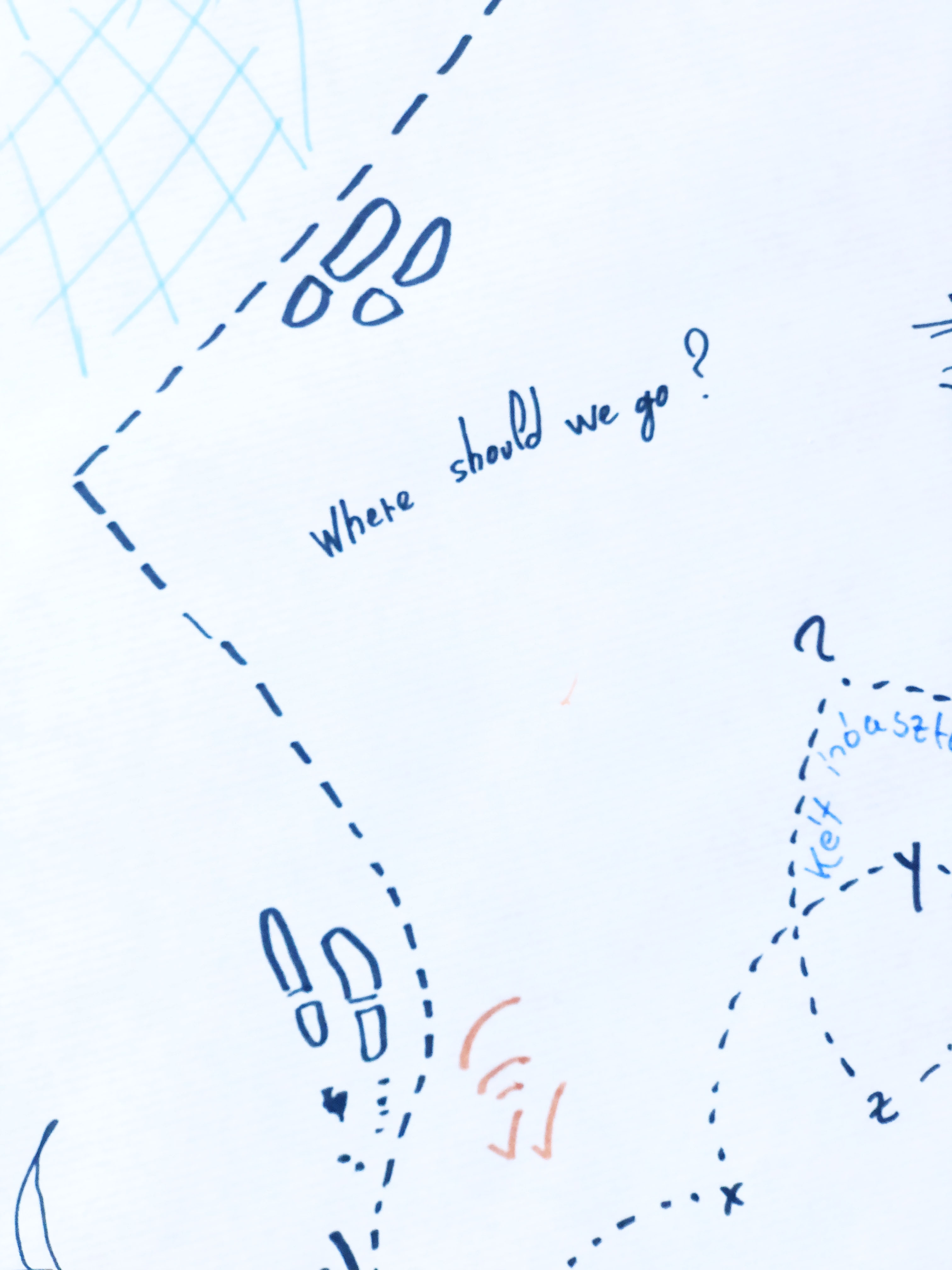A walk on bird lines
Walking is a state in which the mind, body and world align, like three characters conversing with each other. The space we pass through usually has a begining and an end, but walking can also be an end in itself, a meditative act, a search, a rhythmic movement that generates a rhythm of thought.
Using the Icarus application created by researchers at the Max Planck Institute to track the migratory movements of animals, we started looking at the lines drawn by the migration of birds over periods of months and years. Animal migration is something that exists outside of the framework through which we experience the world. Their movements ignore our conceptual and physical limits (even if they are sometimes constrained by our artificial environment). They are guided by the search for conditions that met their basic needs, but they are still shrouded in mystery: we still do not fully understand what determines their choice of direction, or how they navigate.
![]()
Walking is a state in which the mind, body and world align, like three characters conversing with each other. The space we pass through usually has a begining and an end, but walking can also be an end in itself, a meditative act, a search, a rhythmic movement that generates a rhythm of thought.
Using the Icarus application created by researchers at the Max Planck Institute to track the migratory movements of animals, we started looking at the lines drawn by the migration of birds over periods of months and years. Animal migration is something that exists outside of the framework through which we experience the world. Their movements ignore our conceptual and physical limits (even if they are sometimes constrained by our artificial environment). They are guided by the search for conditions that met their basic needs, but they are still shrouded in mystery: we still do not fully understand what determines their choice of direction, or how they navigate.

Among the animals that are part of the Icarus study, we chose to focus on white storks and purple herons, walking the lines drawn by their movements in order to make a new map. A symbol of (re)birth and fertility, the stork is a messenger, bearer of hope and auspiciousness; the heron a symbol of balance, wisdom and regeneration. Walking becomes a state of infinite possibilities, a performative search that follows a new direction, in harmony with what surrounds us. Rita, the chosen bird, becomes an image of a new balance that is built through a collective walk and a series of gestures that give life to a common rhythm.
Walking is perhaps the voluntary action closest to the body's natural rhythms, such as the rhythm of the breath and the heart. The walker is never in front of the landscape, it is not a question of contemplation. As Frédéric Gros writes, walking is like a caress of the landscape. Between touch and grasp, the caress stretches endlessly until the arm reaches and traces a new path.


There is something ritualistic in the rhythm of the breath and the steps, it is an explorative movement that seeks to further deepen our contact with the surface of the Earth and our relationship with what surrounds us.
This performative research follows a labyrinth of invisible ways and outlines a new path. Throughout the walk we collect photographs, videos and sound recordings of the landscape as well as our bodily rhythms (heartbeats, breath frequency, footsteps). We then rework the collected material to shape a new cartography, a visual and auditory installation, governed by the balance between living beings and their environment. The search for this balance as well as its perpetual movement is the object of our research.

To listen to the soundpiece Looking For Rita, purple heron, Italy
https://www.youtube.com/watch?v=Oei-QrMDeJM
This project was a collaboration with George Selley.
Details of the visual cartographies drawn by the exhibition visitors from the sound map we created while walking on the bird migratory lines.
August, 2021



